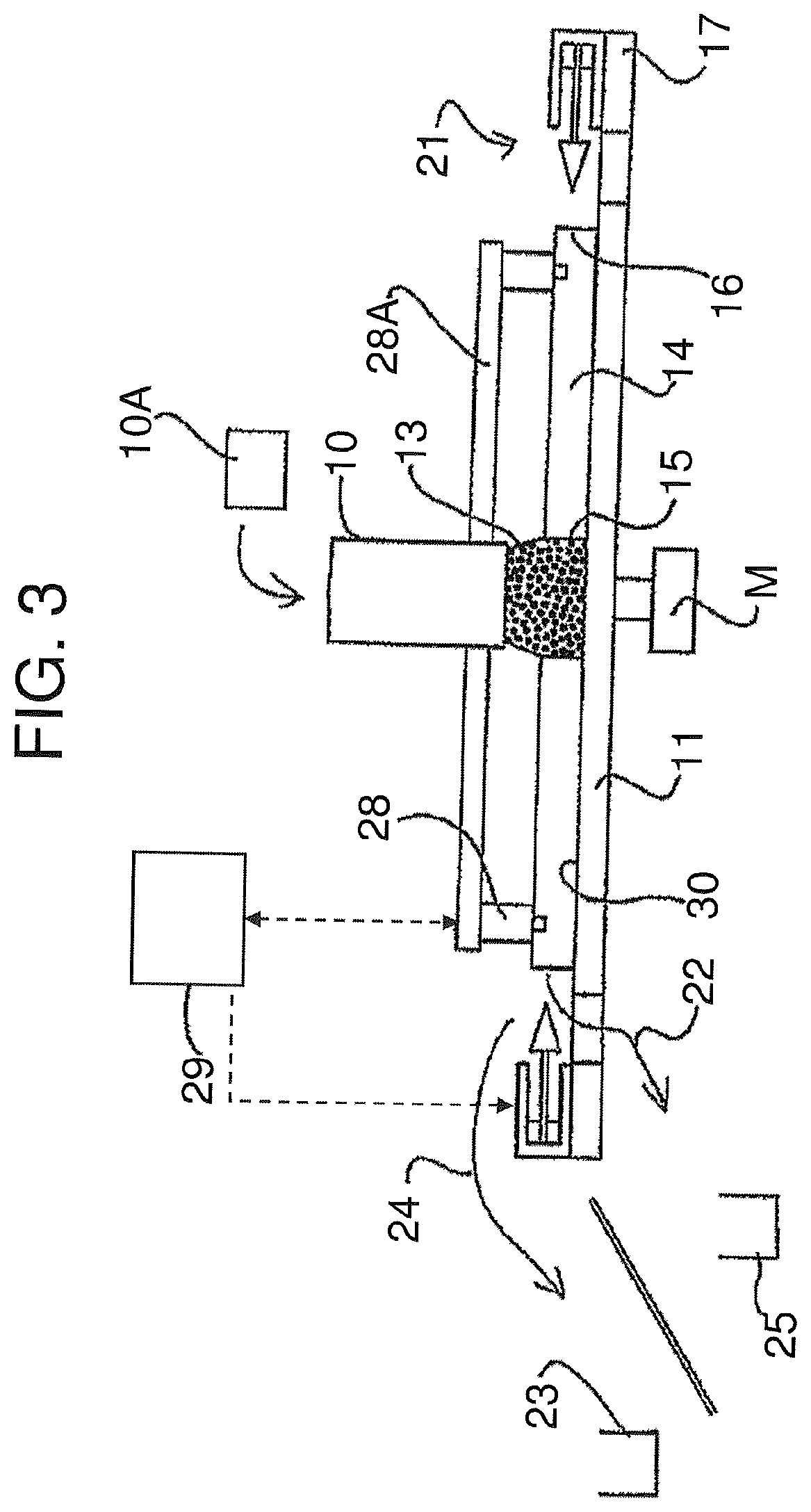Singulating and Orienting Objects for Feeding
a technology for orienting objects and feeding, applied in the field of singulating and orienting objects for feeding, can solve the problems of significant acoustic noise that must be muffled by devices, and achieve the effects of increasing the throughput of the system, increasing the acceleration of objects, and increasing the velocity
- Summary
- Abstract
- Description
- Claims
- Application Information
AI Technical Summary
Benefits of technology
Problems solved by technology
Method used
Image
Examples
Embodiment Construction
[0112]As shown in FIG. 1A, a rotating body 50, described in more detail hereinafter, has one or more integral ducts 51 carried on the body 50 at angularly spaced portions there around. Thus, each duct is rotated about an axis at the center of the body. The ducts are fed with objects 52 by supply conduit 53 and act to singulate the objects so that they are fed in a row one behind the other. Supply conduit 53 includes a gate 531 that regulates the flow of objects onto rotating body 50. Objects become aligned with the longitudinal direction along the duct axis either parallel to the duct as indicated at 521 or antiparallel as indicated at 522 as objects move from the inner end of a duct to the outer end.
[0113]In the example shown, each object has a longitudinal axis and is shaped so that the object has first and second different orientations of the longitudinal axis. That is in one example applied to screws or similar fasteners, the objects have a head 523 and a shank 524 and the longi...
PUM
 Login to View More
Login to View More Abstract
Description
Claims
Application Information
 Login to View More
Login to View More - R&D
- Intellectual Property
- Life Sciences
- Materials
- Tech Scout
- Unparalleled Data Quality
- Higher Quality Content
- 60% Fewer Hallucinations
Browse by: Latest US Patents, China's latest patents, Technical Efficacy Thesaurus, Application Domain, Technology Topic, Popular Technical Reports.
© 2025 PatSnap. All rights reserved.Legal|Privacy policy|Modern Slavery Act Transparency Statement|Sitemap|About US| Contact US: help@patsnap.com



